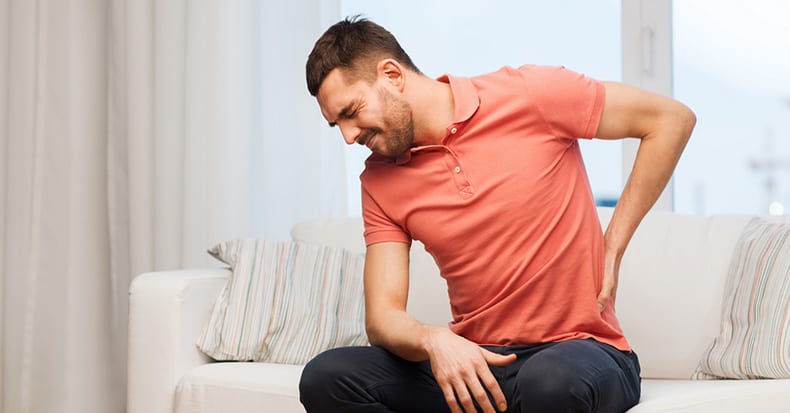Low back pain (LBP) can strike at any time or place, often when we least expect it. There are “self-help” approaches that can be of great benefit, but many of these approaches can fail, or worse, irritate the condition. Here are some “do’s and don’ts” when self-managing low back pain!
Ice vs. Heat? Typically, people are almost always confused about which is better, ice or heat? This decision can be significantly helpful or hurtful, depending on the case. Generally, “ice is nice,” as it vasoconstricts and pushes out inflammation or swelling, which usually feels relieving and helpful even though the initial “shock” of ice may not be too appealing to most of us! This is probably why MOST people will wrongly choose heat as their initial course of self-care.
This is usually wrong because heat vasodilates, which draws blood into the injured area that is already inflamed and swollen, thus adding more fluid to the injured area—sort of like throwing gas on a fire! Heat may feel good initially, but often soon after, increased pain intensity and frequency may occur. When LBP is chronic or NOT new/acute, heat can be very helpful, as it relaxes muscles and improves movement by reducing stiffness (but never use heat more than 20 minutes per hour).
The biggest mistake about the use of heat is leaving it on too long—some people even burn themselves with a heating pad they’ve left on for hours of continuous use—sometimes overnight (PLEASE DON’T DO THAT!). When using ice, there are MANY ways one can apply it. If you only have 5-10 minutes, that is better than nothing! However, an ideal approach is to apply the ice pack or bag as follows: On 15 min. / off 15 min. / on 15 min. / off 15 min. / on 15 minutes (total time: 1:15 hr). The “off 15 minutes” helps the area to warm up by allowing the blood to come back into the low back area, which avoids frost bite and sets up a pump-like action.
Even better is an approach called “CONTRAST THERAPY” where we start and end with ice and use heat in between as follows: ICE 10 minutes / HEAT 5 min. / ICE 10 min. / HEAT 5 min. / ICE 10 min. (total time: 40 minutes). This approach creates a stronger pump-like or “push-pull” action that pushes out fluids/inflammation (with ice) followed by pulling in fluids (with heat). Both approaches are effective! If you ever feel worse after icing, PLEASE STOP AND CONTACT YOUR DOCTOR OF CHIROPRACTIC, as you may have a unique case or situation.
How active should I be? Here too, most people usually try to do too much even after they feel “warning signs”. It's human nature to want to “…get things done,” so sometimes we push ourselves beyond the limits of our tissue’s capacity, resulting in an injury. Once we’ve hurt our back, we STILL try to stay with our daily routine, ignoring our LBP the best we can. Generally, it’s BETTER to be a little active than it is to be too sedentary, but there is also a limit, as too much activity is like “…picking at a cut,” only prolonging healing and recovery.
If every time you bend over results in a sharp, dagger-like pain in your low back, PLEASE STOP and assess the situation! Position preference is the KEY to determining what type of stretches or other exercises may be best for you. So, if bending over REDUCES LBP, pull your knees to your chest (your doctor of chiropractic can show you how)! If bending backwards feels better, he or she can show you several extension exercises that can be done multiple times a day. Remember, too much sitting or lying down will weaken your low back muscles. Emphasize positions that feel good and avoid sharp, lancinating pain!



